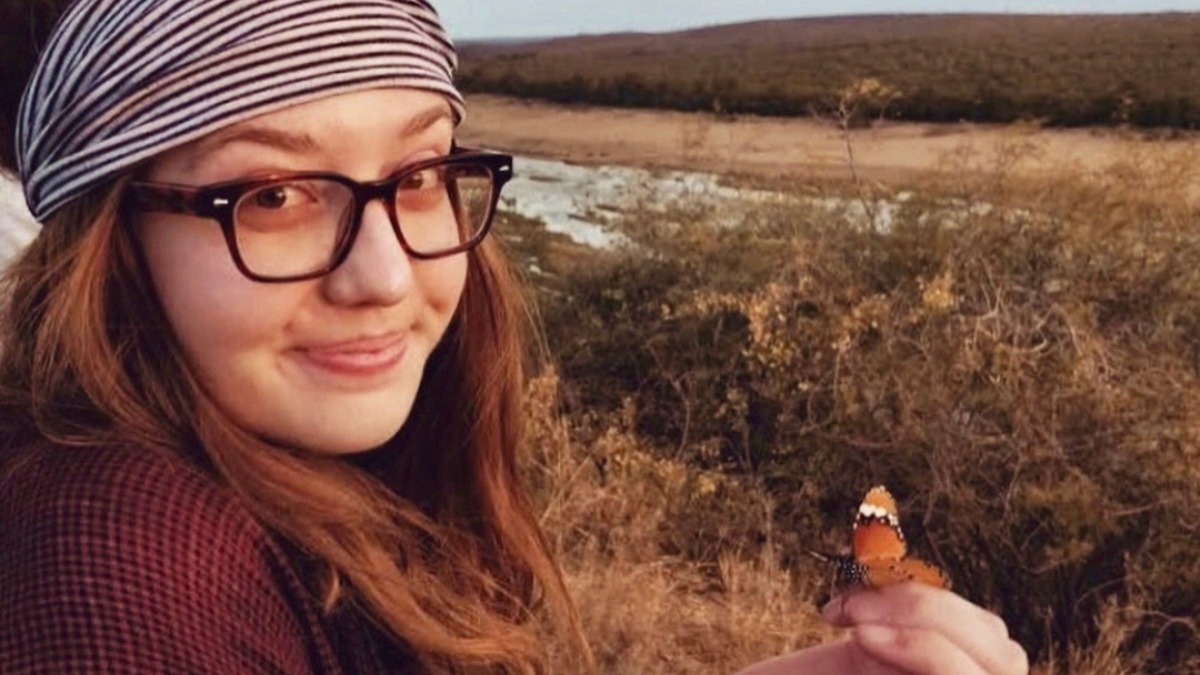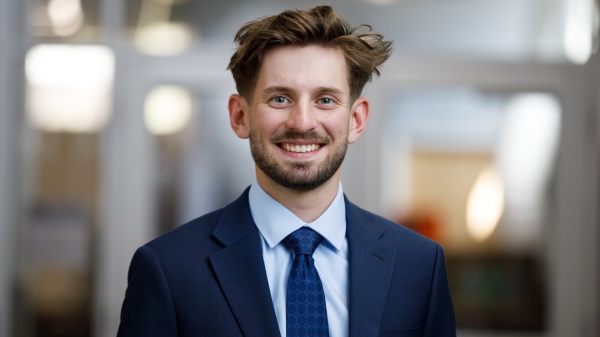Life lessons propel conservation biology graduate toward environmental law

Bailey Reynolds is earning her BS in biological sciences (conservation biology and ecology) from the ASU School of Life Sciences. Photo courtesy Bailey Reynolds
Editor’s note: This is part of a series of profiles for spring 2019 commencement.
Bailey Reynolds chose to attend Arizona State University for three reasons. First, it’s close to home. Second, its dedicated to inclusivity. And third, she figured with a school as large as ASU, she would have a lot of opportunities to find her calling.
And find it, she did.
Reynolds is graduating with her Bachelor of Science in biological sciences — specifically in conservation biology and ecology. Two courses in conservation and sustainability, as well as study abroad experiences, confirmed her career path in conservation and expanded her world view.
“Both classes and my experiences abroad helped me realize that no one species, or social issue, or positive action taken is more important than the other,” Reynolds said. “Every moving piece is part of another and we cannot create equitable systems for all lifeforms if we do not acknowledge the interconnectedness of the economy, society, environment — everything.”
After graduation, Reynolds will be conducting research with a previous internship supervisor. The goal is to publish an updated version of her supervisor’s book on how new legislation has impacted the regulatory functions of government agencies.
She’s also considering Americorps programs and will be applying to law schools with intent to enroll come fall 2020.
Question: What was your “aha” moment, when you realized you wanted to pursue a career in your field?
Answer: In the fall of 2017, I was simultaneously taking Professor Sharon Hall’s Conservation of Biodiversity and Professor Dan Childers' Sustainable World when I was like, “Yeah, this is important to me, this makes sense.” Both professors are passionate about their work and good teachers in general, so I think it would be hard to take one of their classes and not care about protecting the Earth and everything that is encompassed within it.
It hit me even harder when I studied abroad in South Africa that I wanted to work in conservation, sustainability and environmental justice. You can’t just see a herd of elephants out in nature, or eat baobab fruit right off the "tree of life," or listen to children giggling in Tshivenda and not feel deeply connected to and protective over every single part of the natural world.
Q: What’s something you learned while at ASU — in the classroom or otherwise — that surprised you, that changed your perspective?
A: I learned recently that when urban development occurs in Arizona we tend to just build and worry about how we’re going to get water to people after the fact. That was definitely surprising and doesn’t make a whole lot of sense to me. It kind of goes against the whole practice of systems thinking — which I found most perspective-changing. Systems thinking requires that we consider every alternative outcome to a proposed intervention. We could prevent so many externalities if we just considered whole systems more often!
Q: Which professor taught you the most important lesson while at ASU?
A: Dr. Sharon Hall taught me the ins and outs of conservation science and the importance of social sciences in this field. Seriously, everyone should take BIO 322.
Dr. Sabine Feisst taught me the importance of mindfulness and listening. She also helps her students blend art with nature and science and she challenges them to be thoughtful and creative whenever possible.
Dr. Molina Walters taught me to trust myself and my abilities. She also gets the message through to all of her students that as educated people, it is our duty to communicate what we know with others to ensure that we create the best possible future for all life that is to come.
Professor Jacob Gold taught me how to do my taxes, plan for retirement, and be a nice person! All of these people taught me to find purpose and passion in my work!
Q: What’s the best piece of advice you’d give to those still in school?
A: Take care of yourself. School is important but feeling better than OK is more important.
It’s been said time and time again, but say yes to as many things as possible, as early as possible. Get involved, volunteer, apply for jobs and internships that seem cool even if you think you may not be qualified and ask the professors that you really like if they need help with any of their projects.
Don’t let the fear of rejection or the fear of not excelling at something right off the bat deter you from trying something new. Way easier said than done, but it was good advice when I heard it and it’s good advice now.
Q: What was your favorite spot on campus, whether for studying, meeting friends or just thinking about life?
A: Wrigley: I just feel like there are a lot of good ideas and super bright people pulsing through this building at all times.
Social Sciences: The courtyard of this building is essentially a small garden and I dig plants — which is probably not all that surprising considering my area of study. Plus, I think all the vegetation and open ventilation make this building way cooler temp-wise during the warmer months.
Pathway between Interdisciplinary B and Discovery Hall: My friend Tyler Chleborad and I had a freshman math class (shout out Professor Banerjee) in Discovery Hall and every time I walk down that pathway, I’m reminded of my friend and all the good chats we had on the walk back to our dorms. Plus, it’s just pretty over there. Again, I’m a fan of green things.
Q: What’s something you are most proud of during your time at ASU?
A: I was really naive when I first arrived at ASU. That said, I am proud of how much I expanded my general bank of knowledge as well as my worldview. I’m really happy that I took the opportunity to study abroad in both Costa Rica and South Africa because those immersive experiences increased my appreciation for different cultures, environments and ways of life and allowed me to approach each moment thereafter with a new perspective.
I am also happy that the projects I worked on outside of class were interdisciplinary in nature. I interned with the state of Arizona where I worked with data, communications and finance experts to write grants for sustainable initiatives within agencies and promote reductions in single occupancy vehicles on the road. I also measured socio-cultural perceptions of water in rural towns when I interned with Arizona Humanities, a nonprofit whose mission is to build a just and civil society by creating opportunities to explore our shared human experiences through discussion, learning and reflection.
Moreover, I worked with students and teachers from science, technology, business and arts backgrounds when working on research projects pertaining to helium extraction and acoustic ecology. I just feel like I learned so much and grew a lot as a person over the past four years and I’m much happier with who I am today than with who I was back then.
Q: If someone gave you $40 million to solve one problem on our planet, what would you tackle?
A: Climate change, poverty and biodiversity loss. I don’t think we can talk about one of those things without the other. Socially vulnerable people and animals usually contribute the least to increasing rates of climate change yet feel the effects more strongly than other populations. It’s just not right.
Q: Describe some challenges or hurdles you faced while earning your degree, and what you did or what took place to overcome them.
A: My house got robbed about a month ago and I lost a whole semester and a half’s worth of thesis progress, but I powered through and passed my defense anyway!
I’ve struggled with my mental health since I was a teen, so there were many times when anxiety and depression took a toll on me and my ability to do my best at school and work. I’m stubborn and for the longest time I thought that my body and mind would just work themselves out, but when I finally took actions to address those issues I was so much better off. That’s kind of heavy and dramatic, but I think it’s important that we continue the recent trend of talking about mental health more openly and destigmatizing mental health issues. In talking about this stuff we’ve started to realize that it’s not all that uncommon and that there are people out there who can relate to feelings that some may think are only unique to them.
Q: Are there any particular people (advisers, family or friends) who really supported you on your journey — and what did they do to help?
A: I love the saying “a person is not a person without other people” because I really feel that I would not be the person I am today without the support and guidance from all the influential people that have entered my life or even briefly passed through it. Here are just a few of the people that have shaped me and helped me grow:
Mom, Dad and Danielle: literally the best family imaginable. They are truly my best friends and confidants. I don’t know what I would do without them.
Nichol Brown, Maria Brunacini and Sawyer Treese: each of these people have been blessings to me in one way or another during my time at ASU. They listened to me when I was stressed out or just plain emotional, encouraged me when I doubted myself and continually challenged me to be a better human. I respect all of these people intensely and consider them role models.
Nichol was my suitemate freshman year, Maria was my first official college friend, and I’ve known Sawyer since we were kids and it’s been cool to see him evolve into the wonderfully self-actualized person that he is today.
Q: Looking back, is there anything you would go back and change?
A: I like to say that I don’t regret anything because I think I made the choices that I did for a reason, but I do think that I was unnecessarily insecure for like the first two years that I was at ASU, which is silly because nobody really has it all together. I still struggle with confidence on a daily basis; so I guess if I absolutely had to change something I would have spoken and acted with humility rather than insecurity.
Q: What did ASU provide to you that you think you could not have found anywhere else?
A: Maybe I just know a lot of really motivated people, but I have not met anyone at ASU who has not interned some place, worked on some cool research project or studied abroad. I think ASU does a pretty nice job of setting us up to do well if we take advantage of all the pathways that are available to us.
More Science and technology

Cracking the code of online computer science clubs
Experts believe that involvement in college clubs and organizations increases student retention and helps learners build valuable…
Consortium for Science, Policy & Outcomes celebrates 25 years
For Arizona State University's Consortium for Science, Policy & Outcomes (CSPO), recognizing the past is just as important as…

Hacking satellites to fix our oceans and shoot for the stars
By Preesha KumarFrom memory foam mattresses to the camera and GPS navigation on our phones, technology that was developed for…